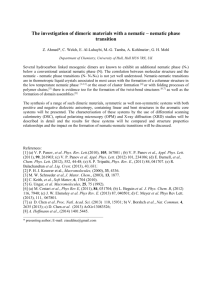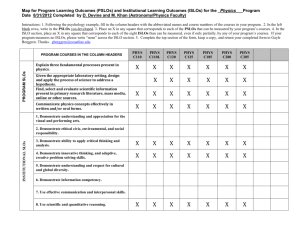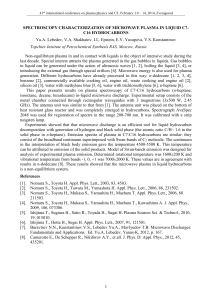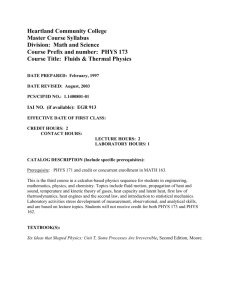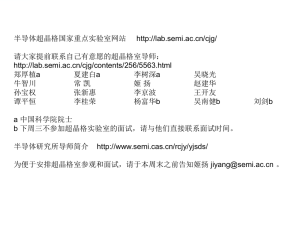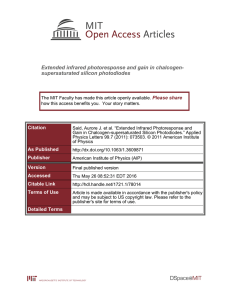1. Introduction
advertisement
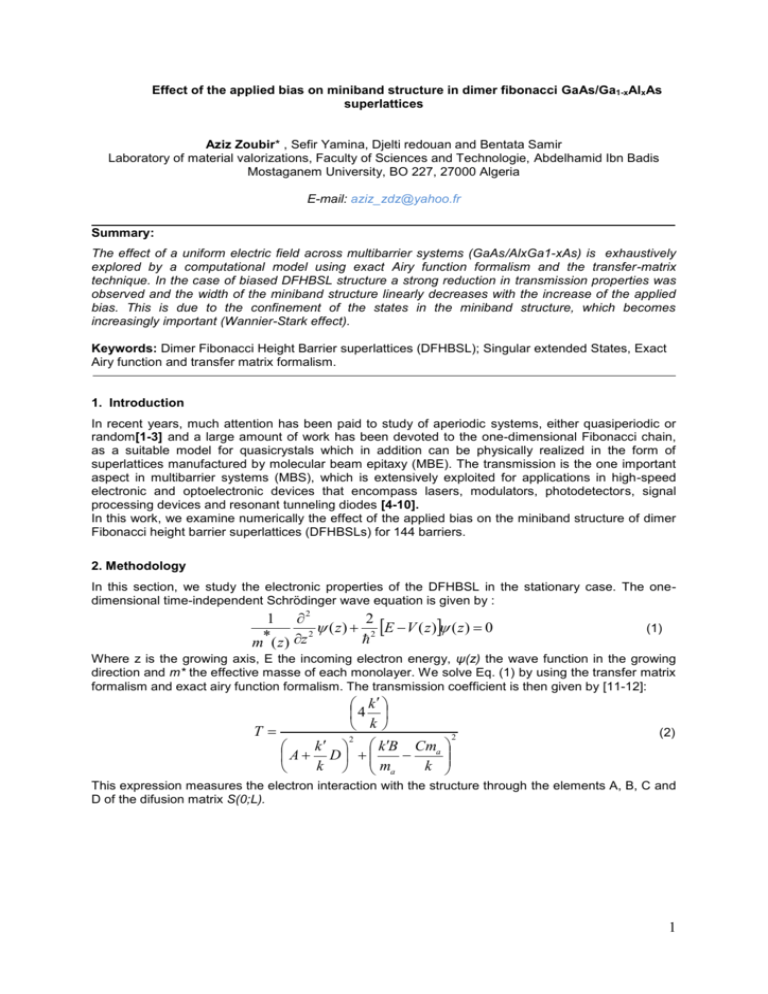
Effect of the applied bias on miniband structure in dimer fibonacci GaAs/Ga1-xAlxAs superlattices Aziz Zoubir* , Sefir Yamina, Djelti redouan and Bentata Samir Laboratory of material valorizations, Faculty of Sciences and Technologie, Abdelhamid Ibn Badis Mostaganem University, BO 227, 27000 Algeria E-mail: aziz_zdz@yahoo.fr Summary: The effect of a uniform electric field across multibarrier systems (GaAs/AlxGa1-xAs) is exhaustively explored by a computational model using exact Airy function formalism and the transfer-matrix technique. In the case of biased DFHBSL structure a strong reduction in transmission properties was observed and the width of the miniband structure linearly decreases with the increase of the applied bias. This is due to the confinement of the states in the miniband structure, which becomes increasingly important (Wannier-Stark effect). Keywords: Dimer Fibonacci Height Barrier superlattices (DFHBSL); Singular extended States, Exact Airy function and transfer matrix formalism. 1. Introduction In recent years, much attention has been paid to study of aperiodic systems, either quasiperiodic or random[1-3] and a large amount of work has been devoted to the one-dimensional Fibonacci chain, as a suitable model for quasicrystals which in addition can be physically realized in the form of superlattices manufactured by molecular beam epitaxy (MBE). The transmission is the one important aspect in multibarrier systems (MBS), which is extensively exploited for applications in high-speed electronic and optoelectronic devices that encompass lasers, modulators, photodetectors, signal processing devices and resonant tunneling diodes [4-10]. In this work, we examine numerically the effect of the applied bias on the miniband structure of dimer Fibonacci height barrier superlattices (DFHBSLs) for 144 barriers. 2. Methodology In this section, we study the electronic properties of the DFHBSL in the stationary case. The onedimensional time-independent Schrödinger wave equation is given by : 1 2 2 ( z ) 2 E V ( z ) ( z ) 0 2 * m ( z ) z (1) Where z is the growing axis, E the incoming electron energy, ψ(z) the wave function in the growing direction and m* the effective masse of each monolayer. We solve Eq. (1) by using the transfer matrix formalism and exact airy function formalism. The transmission coefficient is then given by [11-12]: k 4 k T 2 2 k k B Cma A D k ma k (2) This expression measures the electron interaction with the structure through the elements A, B, C and D of the difusion matrix S(0;L). 1 3. Results and Discussion The transmission coefficients were numerically evaluated for applied tensions (Va) with DFHBSL structures and were plotted against the incident energy (Fig.1). We observe that the fractal properties of the transmission spectra are destroyed by the application of the electric field. The first region unveils a fair narrowing in transmission properties. It is due to the breaking of symmetry in the potential profile as the applied bias inclines the potential profile. Owing to the Wannier Stark effect, we notice a confinement of the subminibands and, hence, the appearance of singular extended states. The dependence of the miniband structure width versus the applied bias Va is plotted in Fig.2 , indicates that the width of the miniband structure linearly decreases with the increase of the applied bias for the ordered structure. This is due to the confinement of the states in the miniband structure, which becomes increasingly important (Wannier-Stark effect). 0.12 1.0 DFHBSL Va=0.03 Volts Width of the miniband structure 0.11 Transmission (%) 0.8 0.6 0.4 0.2 0.10 0.09 0.08 0.07 0.06 0.0 0.00 4. Conclusion 0.05 0.10 0.15 E (eV) 0.20 0.25 0.30 Fig.2 Width of mini Fig.1 Transmission coefficient of incident electron energy E 0.02 0.04 0.06 0.08 0.10 for the structure0.00 of DFHBSL with N=144 barriers, Va (Volts) V₁=247meV, Vd=150meV and a=b=15Å for Va=0.03 Volts; Fig.6 The effect of the applied bias on transmission properties of DFHBSL structures (GaAs/AlxGa1-xAs) was thoroughly investigated and the use of exact airy function formalism and transfer-matrix technique has allowed us to obtain the corresponding transmission spectra. In the case of biased DFHBSL structure a strong reduction in transmission properties was observed and the width of the miniband structure linearly decreases with the increase of the applied bias. This is due to the confinement of the states in the miniband structure, which becomes increasingly important (Wannier-Stark effect). 5. References [1] S. Golmohammadi and M. K. Moravvej-Farshi. Progress In Electromagnetics Research, PIER 75 (2007), p 69. [2] Z. Aziz, S. Bentata, and R. Djelti. Eur. Phys. J. Appl. Phys. 35 (2006), p 113. [3] I. Gόmez, E. Diez, F. Dominguez-Adame and P. Orellana. Physica E 18 (2003), p 372. [4] Z. AZIZ et al , Modern Physics Letters B, Vol. 23, No. 19 (2009) 2409-2420. [5] A. Khan, S.N. Mohammad, J. Appl. Phys. 92 (2002) 944. [6] J. Nanda, P.K. Mahapatra, C.L. Roy, Phys. B: Condens. Matter 383(2006) 232. [7] L.L. Chang, L. Esaki, R. Tsu, Appl. Phys. Lett. 24 (1974) 593. [8] A. Kikuchi, R. Bannai, K. Kishino, C.M. Lee, J.I. Chyi, Appl. Phys.Lett. 81 (2002) 1729. [9] E. Baumann, F.R. Giorgetta, D. Hofstetter, H. Wu, W.J. Schaff, L.F. Eastman, L. Kirste, Appl. Phys. Lett. 86 (2005) 032110. [10] S. Golka, C. P.u¨ gl, W. Schrenk, G. Strasser, C. Skierbiszewski, M. Siekacz, I. Grzegory, S. Porowski, Appl. Phys. Lett. 88 (2006)172106. [11] G. Bastard, Phys. Rev. B24, (1981), p 5693 [12] S. Adachi, J. Appl. Phys. 58, R1 (1985). 2

